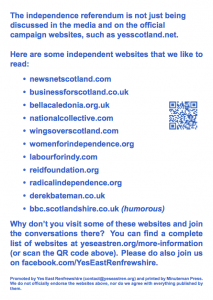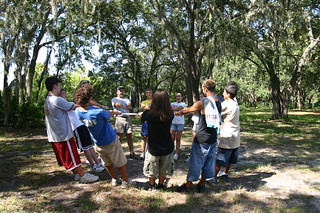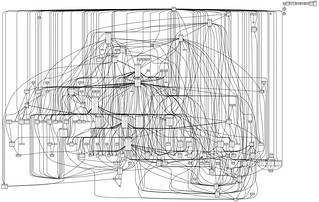Indyref postmortem II: We need to talk about Yes Scotland
I think it’s quite likely the next independence referendum will happen sooner rather than later, so it’s important to have a look at what we could have done better, not in order to point fingers at anybody, but simply to make sure that we win next time. This is the second of several indyref postmortems.


My main criticisms are listed below.
Failure to liaise with local groups
Yes Scotland did play a role in setting up many of the local groups. However, once they had been set up, they were to a large extent ignored, except for endless requests to raise money for Yes Scotland.
One particular problem was that it led to uneven campaigning — if there were many volunteers in one area, they could undertake lots of activities such as fundraising and canvassing that would help later in the campaign, whereas other areas were starved of resources. Nobody seemed to look at the “empty” areas and try to help them grow until they could campaign on their own.
It could also get quite depressing being a Yes campaigner in a strong No area — on Facebook you could see how much fun campaigners in Yes areas were having, but the strong focus on local campaigning meant you had to knock on the doors in your No-leaning area alone. I often wished we could have swapped volunteers with a Yes area for a day!
Perhaps this was all caused by the lack of community organisers, as pointed out by Alistair Davidson last July:
Yes HQ made a serious mistake in not hiring any community organisers. An organiser’s job is to put themselves at the service of a movement (the professional jargon calls organisers “staff” and ordinary movement members “leaders”), to develop and maintain relationships with people who take on leading roles, and to encourage new activists to become involved in leadership and planning. This kind of organic connection to a movement helps to smooth over clashes with the careful plans of the political strategists.
Instead of actually liaising with local groups, Yes Scotland seemed to see it as their role to provide ads, literature, merchandise and email updates.

Team-building
Yes Scotland seemed to think that all the local groups should do was fundraising and canvassing. As soon as people signed up, they were typically told to go and canvas rather than being invited to a social event to make them feel welcome. I think we lost many potential volunteers in this way, especially in the early days of the campaign.

[Wings over Scotland] has lifted our spirits throughout the campaign. When we wake up in the morning and Yes Scotland isn’t in the papers (why?) and the SNP is being timid and talking like an accountant, it is often Wings that is the primary source of commentary that doesn’t seem always to accept the premise set by the mainstream media as the only possible frame for discussing independence. It makes it OK to be both angry and excited while becoming informed at the same time.
It often felt like Yes Scotland had no idea how to deal with their campaigners. As a parent, I often felt they used negative parenting techniques, ignoring the volunteers for too long and then suddenly barking commands at us (“Pulp that leaflet! Don’t participate in the BBC Bias demo! Don’t read Wings!”), instead of using positive techniques, such as engaging proactively. The problem with negative parenting is that eventually the sproglets get fed up and start ignoring you or — worse — start acting against you. Yes Scotland were actually quite lucky that all volunteers felt so strongly about the goal — Scottish independence — that nobody wanted to rock the boat during the campaign.
In addition to community organisers, some internal web forums might have been useful, as well as a yearly Yes conference for lead volunteers.
Yes Scotland the company
Other people have already pointed out that Yes Scotland initially seemed to waste a lot of money by hiring directors used to working in big corporate positions.

Would HQ in their heart of hearts have been happier with a small army of paid canvassers like Better Together’s, rather than having critical and engaged activists with their own dreams, hopes and campaigning ideas? At an event for lead volunteers in Stirling in June ’14, a representative for Yes Scotland for instance told people their job online was to regurgitate the daily messages sent from HQ so that the campaign theme of the day was the one decided in Hope Street, which of course was a pointless appeal at that point in the campaign.
In fact, Yes Scotland often seemed to think like spin doctors, for instance preferring to arrange photo-ops for the media with hand-picked volunteers, while talking down or ignoring the actual grassroots events organised on Facebook.
The database
One huge problem was Yes Scotland’s database. They were clearly so keen to get it up and running quickly that they installed a version of NationBuilder without testing properly that it could cope with Scottish addresses.

I understand they were keen to launch before Better Together, but they would have been better off with a simple one-table MySQL database and a simple PHP website (I could have made this for free if they had asked) until they had had time to test the real system sufficiently.
It would also have been good if there had been a decent canvassing app (or a mobile-friendly website) that could have been used when you sent people out to knock doors. Yes, eventually there was an app, but it arrived late in the day and its functionality was limited.
Conclusion
Yes Scotland wasn’t given an easy task, of course, being tasked with combining the campaigning strength of the SNP with the varied skills exhibited by smaller groups and inexperienced first-time volunteers. One might argue that the laissez-faire attitude adopted towards local groups in many instances actually worked well and that a more active HQ could have demoralised local campaigners much more than Yes Scotland actually did.
However, many of highlights of the campaign that people instinctively associate with Yes Scotland were actually organised independently, such as the wonderful independence marches, the flashmobs and the gatherings on Glasgow’s Independence (George) Square, and it often felt like Yes Scotland weren’t always too happy about not being in control of these.
Hopefully the next incarnation of Yes Scotland will learn from the mistakes made, turning the coming Yes campaign into a truly unstoppable force.
Must-read from @arcofprosperity Indyref postmortem II: We need to talk about Yes Scotland http://t.co/Fp4oQNb8Fo
RT @moh_kohn: Must-read from @arcofprosperity Indyref postmortem II: We need to talk about Yes Scotland http://t.co/Fp4oQNb8Fo
Absolutely accurate analysis but to be honest not critical enough
My party, the SNP , set up Yes prematurely and badly. Led by the wrong person and so focussed on avoiding negativity they failed to implement well thought through and targeted strategies. I for one was often asked to spend hours putting useless dross through letter boxes whilst being told not to distribute Wings Wee Blue Book – the best piece of literature in the whole campaign. Fortunately lots of Yes groups ignored this. In the end we lost by only 6 % and I’m afraid to say at the least had Yes been first class we might have won. Senior SNP personnel must know this and must learn from their mistakes!
I’m an SNP member too, and of course our party made mistakes, too (as did everybody else who was prominent in the campaign) — it’s hard not to during a two-year campaign. However, I wanted to focus here on the errors made by Yes Scotland HQ.
I heard rumours at the time that they launched Yes Scotland in such a rushed fashion because they wanted to make sure they got first choice of Yes vs. No — they feared the No campaign would get in first and call itself “Yes to UK” or similar. I don’t know whether it’s true, but there was probably a point in launching early; however, they could have delayed many appointments and the choice of IT system.
RT @moh_kohn: Must-read from @arcofprosperity Indyref postmortem II: We need to talk about Yes Scotland http://t.co/Fp4oQNb8Fo
Indyref postmortem II: We need to talk about Yes Scotland http://t.co/k5Nne13n6H
I always felt YS was amateurish and made a virtue of the shambolic disorganised “human wave” nature of the yes campaign by lauding “grass roots”. Maybe in the future the demographics of independence support in Scotland will have progressed meaning there are more competent people in the yes campaign. Arguably the failed yes campaign was helpful in destroying labour post-no. Maybe it was all according to plan 😉
Yes, I think the wider Yes movement actually was quite successful in spite of Yes Scotland’s mistakes. I don’t think we should fall into the trap of thinking that a successful campaign is necessarily a centralised one.
Indyref postmortem II: We need to talk about Yes Scotland http://t.co/lxuH6NgRUb
Indyref postmortem II: We need to talk about Yes Scotland http://t.co/ORPb9mthEt
Thomas,
I tend to agree with your broad analysis about the direction of the YES campaign. Expensive office, swish furniture, boys in suits, nice people and no game plan.
That last sentence was from a friend who was courted by YES because of the international contacts they had.
IOf it had not been for the blogs, and in particular Wings, and that little Blue Book I do not think we could have reached the poll results where they needed to wheel out that BIG LIE of the VOW.
In a war analogy it was a sort of diffuse guerrilla strategy where the warriors have to forage for their arms and ammunition.
Yes, I agree. I think some people in HQ thought they could persuade the media to present the Yes arguments fairly if only they were acted really, really nicely and never offended anybody, but of course, that’s not how the real world functions, and the blogs were much more efficient at dealing with the real stories and counteracting media bias.
re Wings and “don’t disturb the natives” extreme focus.
PC gone mental
The second part of @arcofprosperity’s #Indyref postmortem: “We need to talk about Yes Scotland”. Thought-provoking! http://t.co/VlSgqAkSeh
“It could also get quite depressing being a Yes campaigner in a strong No area … I often wished we could have swapped volunteers with a Yes area for a day!”
I don’t know about swaps as such but there was nothing stopping volunteers turning up and offering to help. I don’t have a car so if the East Ren events were inaccessible I’d pop down to Glasgow South to help out. And yes it did raise the spririts. Though it did raise false hopes since I was sure Glasgow was Yes and that the numbers would counteract the strong but smaller No areas.
That is true. I was just saying that the strong focus on local campaigning meant many people never really campaigned outwith their own ward, and I think that led to demoralised campaigners in some areas and overconfident campaigners in others.
RT @WilliamDuguid1: The second part of @arcofprosperity’s #Indyref postmortem: “We need to talk about Yes Scotland”. Thought-provoking! ht…
@nicolasturgeon Some flaws to iron out: Indyref postmortem II: We need to talk about Yes Scotland http://t.co/rGL5jWE1ds
The campaign by YES Scotland wasted a golden opportunity by not utilising all the weapons at it’s disposal.
Too timid in the media and Blair Jenkins was the wrong man for that job.
YS lost my support morally & financially with the Wings Over Scotland debacle,surely an own goal ;blue on blue disaster for Scotland.
Hopefully next time around the campaign will be run and organised by someone with a clear strategy and Scotland’s interests foremost ,not an overpaid suit from the MMS.
What’s girning again? I can only think of the West Country thing of gurning … pulling strange faces …
Moaning, complaining.
I can’t comment on much of this but the database thing is interesting.